Related Research Articles

Augustus Edwin John was a Welsh painter, draughtsman, and etcher. For a time he was considered the most important artist at work in Britain: Virginia Woolf remarked that by 1908 the era of John Singer Sargent and Charles Wellington Furse "... was over. The age of Augustus John was dawning." He was the younger brother of the painter Gwen John.

Isaac Rosenberg was an English poet and artist. His Poems from the Trenches are recognized as some of the most outstanding poetry written during the First World War.
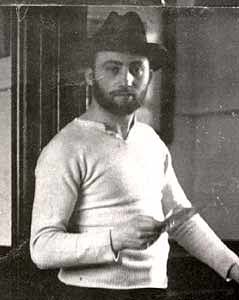
David Garshen Bomberg was a British painter, and one of the Whitechapel Boys.

Benjamin Lauder Nicholson, OM was an English painter of abstract compositions, landscapes, and still-life. He was one of the leading promoters of abstract art in England.

Dora de Houghton Carrington, known generally as Carrington, was an English painter and decorative artist, remembered in part for her association with members of the Bloomsbury Group, especially the writer Lytton Strachey. From her time as an art student, she was known simply by her surname as she considered Dora to be "vulgar and sentimental". She was not well known as a painter during her lifetime, as she rarely exhibited and did not sign her work. She worked for a while at the Omega Workshops, and for the Hogarth Press, designing woodcuts.

The UCL Slade School of Fine Art is the art school of University College London (UCL) and is based in London, England. It has been ranked as the UK's top art and design educational institution. The school is organised as a department of UCL's Faculty of Arts and Humanities.

Paul Nash was a British surrealist painter and war artist, as well as a photographer, writer and designer of applied art. Nash was among the most important landscape artists of the first half of the twentieth century. He played a key role in the development of Modernism in English art.
Gilbert Eric Cannan was a British novelist and dramatist.
John Northcote Nash was a British painter of landscapes and still-lives, and a wood engraver and illustrator, particularly of botanic works. He was the younger brother of the artist Paul Nash.
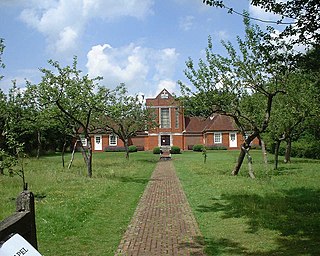
Sandham Memorial Chapel is in the village of Burghclere, Hampshire, England. It is a Grade I listed, 1920s decorated chapel, designed by Lionel Godfrey Pearson. The chapel was built to accommodate a series of paintings by the English artist Stanley Spencer. It was commissioned by Mary and John Louis Behrend (1881–1972) as a memorial to Mary's brother, Lieutenant Henry Willoughby Sandham who died of illness contracted in Macedonia after the First World War. The chapel is surrounded by lawns and orchards, with views of Watership Down.

Sir Muirhead Bone was a Scottish etcher and watercolourist who became known for his depiction of industrial and architectural subjects and his work as a war artist in both the First and Second World Wars.

Philip Wilson Steer was a British painter of landscapes, seascapes plus portraits and figure studies. He was also an influential art teacher. His sea and landscape paintings made him a leading figure in the Impressionist movement in Britain but in time he turned to a more traditional English style, clearly influenced by both John Constable and J. M. W. Turner, and spent more time painting in the countryside rather than on the coast. As a painting tutor at the Slade School of Art for many years he influenced generations of young artists.
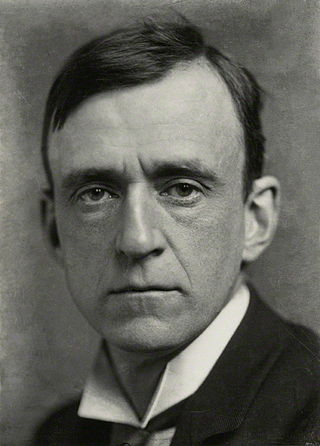
Henry Tonks, FRCS was a British surgeon and later draughtsman and painter of figure subjects, chiefly interiors, and a caricaturist. He became an influential art teacher.
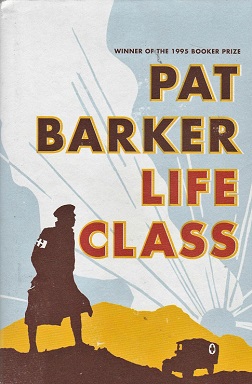
Life Class is a novel by Pat Barker released in 2007. The novel is about students at the Slade School of Art in the first years of the twentieth century, one of whom volunteers to serve in a front line hospital during the First World War.

John Currie was an English painter and murderer. Born in Staffordshire, the illegitimate son of an Ulster-Scottish father who was a 'navvy' working on the railways and an English mother, he worked as an artist in the Potteries, painting ceramics, before going to the Royal College of Art in 1905, and later becoming Master of Life Painting at Bristol. He married in 1907. In the summer of 1910 he briefly attended the Slade School of Art, where he joined the 'Neo-Primitive' group that included fellow Slade students Mark Gertler, C.R.W. Nevinson, Edward Wadsworth, Stanley Spencer and Adrian Allinson. The contemporary art collector Michael Sadleir described him as 'blazing with genius'; others likened him to a character in a Dostoevsky novel.
British official war artists were a select group of artists who were employed on contract, or commissioned to produce specific works during the First World War, the Second World War and select military actions in the post-war period. Official war artists have been appointed by governments for information or propaganda purposes and to record events on the battlefield; but there are many other types of war artist.

Maxwell Gordon Lightfoot was an artist and painter from Liverpool who became known for his depictions of atmospheric pastoral scenes and sepia illustrations of figures. Lightfoot showed great talent as a student whilst at the Slade School of Art and when he exhibited with the Camden Town Group, but he killed himself at a young age. His obituary in The Times stated, 'All artists and critics.... were united in believing that Lightfoot would have a most distinguished career in the highest rank of painting.'
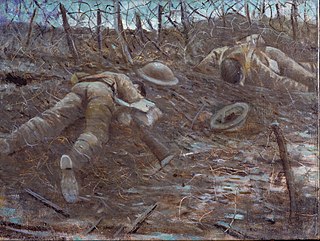
Paths of Glory is a 1917 painting by British artist C. R. W. Nevinson. The title quotes from a line from Thomas Gray's 1750 poem Elegy Written in a Country Churchyard: "The paths of glory lead but to the grave". It is held by the Imperial War Museum in London, which describes it as "one of Nevinson's most famous paintings".

Darsie Napier Japp MC was an English painter and soldier.

Sunrise, Inverness Copse is a 1918 watercolour by English artist Paul Nash, which was produced during World War I. It depicts a scene from the Western Front near Ypres in Belgium, and was developed from an eye-witness sketch which Nash drew whilst at the scene in 1917. The drawing is in the collection of the Imperial War Museum, in London.
References
- ↑ "About me". David Boyd Haycock. Archived from the original on 16 July 2011. Retrieved 31 March 2011.
- ↑ Haycock, David Boyd (2002). Paul Nash. Tate Publishing. ISBN 1-85437-436-2. OCLC 50176269.
- ↑ Purves, Libby (6 June 2008). "Mortal Coil by David Boyd Haycock and Not Dead Yet by Julia Neuberger". Times Online . Retrieved 21 February 2011.[ dead link ]
- ↑ Uglow, Jenny (21 November 2009). "A Crisis of Brilliance: Five Young British Artists and the Great War by David Boyd Haycock". The Guardian . Retrieved 21 February 2011.
- 1 2 Hartford, Maggie (23 October 2010). "Double delight for author David". Oxford Times . Retrieved 21 February 2011.